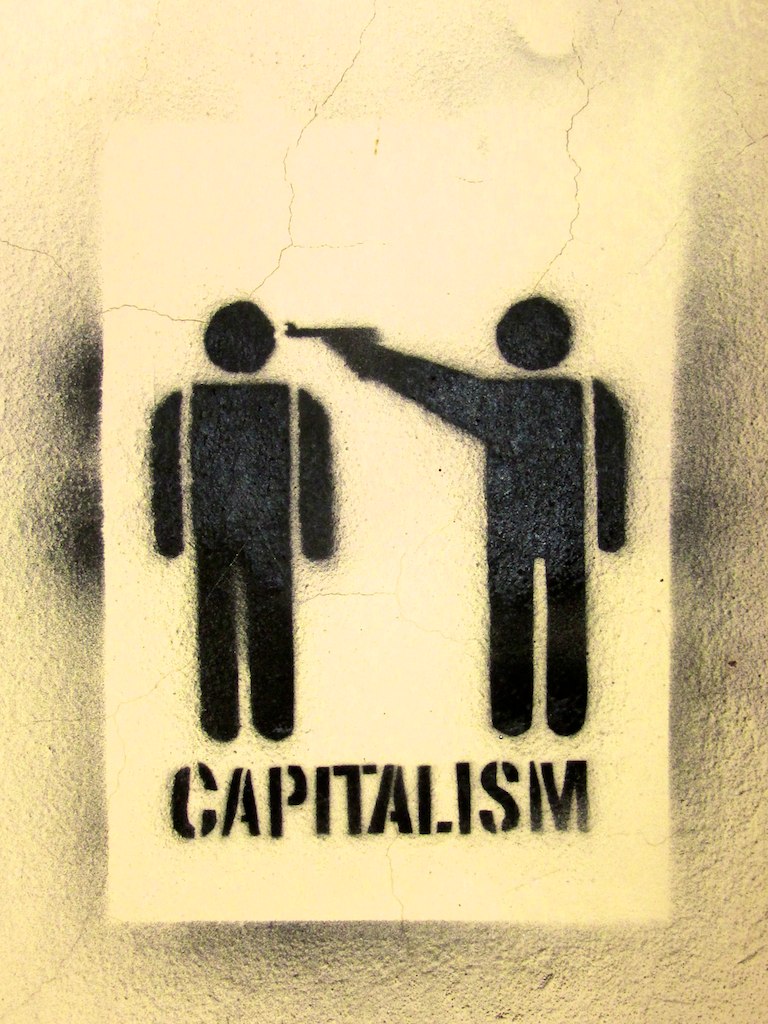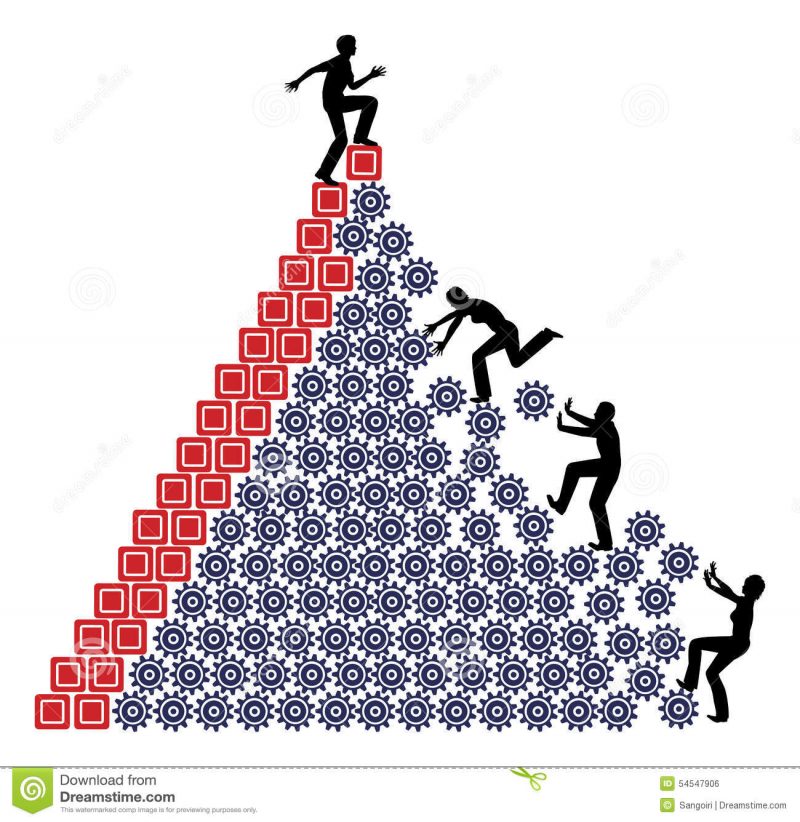
A striking paradox animates political economy in our times. On the one hand, mainstream economics and much of left economics discuss our era as one of intense and increased competition among businesses, now on a global scale. It is a matter so self-evident as no longer to require empirical verification or scholarly examination.
On the other hand, wherever one looks, it seems that nearly every industry is concentrated into fewer and fewer hands. Formerly competitive sectors like retail are now the province of enormous monopolistic chains, massive economic fortunes are being assembled into the hands of a few mega-billionaires sitting atop vast empires, and the new firms and industries spawned by the digital revolution have quickly gravitated to monopoly status. In short, monopoly power is ascendant as never before.
This is anything but an academic concern. The economic defense of capitalism is premised on the ubiquity of competitive markets, providing for the rational allocation of scarce resources and justifying the existing distribution of incomes. The political defense of capitalism is that economic power is diffuse and cannot be aggregated in such a manner as to have undue influence over the democratic state. Both of these core claims for capitalism are demolished if monopoly, rather than competition, is the rule.
For all economists, mainstream and left, the assumption of competitive markets being the order of the day also has a striking impact on how growth is assessed in capitalist economies.
Under competitive conditions, investment will, as a rule, be greater than under conditions of monopoly, where the dominant firms generally seek to slow down and carefully regulate the expansion of output and investment so as to maintain high prices and profit margins—and have considerable power to do so. Hence, monopoly can be a strong force contributing to economic stagnation, everything else being equal.
With the United States and most of the world economy (notwithstanding the economic rise of Asia) stuck in an era of secular stagnation and crisis unlike anything seen since the 1930s—while U.S. corporations are sitting on around $2 trillion in cash—the issue of monopoly power naturally returns to the surface.1
In this review, we assess the state of competition and monopoly in the contemporary capitalist economy—empirically, theoretically, and historically. We explain why understanding competition and monopoly has been such a bedeviling process, by examining the “ambiguity of competition.”
In particular, we review how the now dominant neoliberal strand of economics reconciled itself to monopoly and became its mightiest champion, despite its worldview—in theory—being based on a religious devotion to the genius of economically competitive markets.
When we use the term “monopoly,” we do not use it in the very restrictive sense to refer to a market with a single seller. Monopoly in this sense is practically nonexistent.
Instead, we employ it as it has often been used in economics to refer to firms with sufficient market power to influence the price, output, and investment of an industry—thus exercising “monopoly power”—and to limit new competitors entering the industry, even if there are high profits.2 These firms generally operate in “oligopolistic” markets, where a handful of firms dominate production and can determine the price for the product. Moreover, even that is insufficient to describe the power of the modern firm.
As Paul Sweezy put it, “the typical production unit in modern developed capitalism is a giant corporation,” which, in addition to dominating particular industries, is “a conglomerate (operating in many industries) and multi-national (operating in many countries).”3
In the early 1980s, an unquestioning belief in the ubiquitous influence of competitive markets took hold in economics and in capitalist culture writ large, to an extent that would have been inconceivable only ten years earlier. Concern with monopoly was never dominant in mainstream economics, but it had a distinguished and respected place at the table well into the century.
For some authors, including Monthly Review editors Sweezy and Harry Magdoff, as well as Paul Baran, the prevalence and importance of monopoly justified calling the system monopoly capitalism.
But by the Reagan era, the giant corporation at the apex of the economic system wielding considerable monopoly power over price, output, investment, and employment had simply fallen out of the economic picture, almost as if by fiat.
As John Kenneth Galbraith noted in 2004 in The Economics of Innocent Fraud: “The phrase ‘monopoly capitalism,’ once in common use, has been dropped from the academic and political lexicon.”4For the neoliberal ideologues of today, there is only one issue: state versus market.
Economic power (along with inequality) is no longer deemed relevant. Monopoly power, not to mention monopoly capital, is nonexistent or unimportant. Some on the left would in large part agree.
In contrast, we shall demonstrate in what follows that nothing could be further removed from a reality-based social science or economics than the denial of the tendency to monopolization in the capitalist economy: which is demonstrably stronger in the opening decades of the twenty-first century than ever before.
More concretely, we argue that what we have been witnessing in the last quarter century is the evolution of monopoly capital into a more generalized and globalized system of monopoly-finance capital that lies at the core of the current economic system in the advanced capitalist economies—a key source of economic instability, and the basis of the current new imperialism.

The Real World Trend: Growth of Monopoly Power
The desirability of monopoly, from the perspective of a capitalist, is self-evident: it lowers risk and increases profits. No sane owner or business wishes more competition; the rational move is always to seek as much monopoly power as possible and carefully avoid the nightmare world of the powerless competitive firm of economics textbooks.
Once a firm achieves economic concentration and monopoly power, it is maintained through barriers to entry that make it prohibitively costly and risky for would-be competitors successfully to invade an oligopolistic or monopolistic industry—though such barriers to entry remain relative rather than absolute. Creating and maintaining barriers to entry is essential work for any corporation.
In his authoritative study, The Economics of Industrial Organization, William Shepherd provides a list of twenty-two different barriers to entry commonly used by firms to exclude competitors and maintain monopoly power.5 Monopoly, in this sense, is the logical result of competition, and should be expected. It is in the DNA of capitalism.
For Karl Marx, capital tended to grow ever larger in a single hand, partly as a result of a straightforward process of concentration of capital (accumulation proper), and even more as a result of the centralization of capital, or the absorption of one capital by another.
In this struggle, he wrote, “the larger capitals,” as a rule, “beat the smaller…. Competition rages in direct proportion to the number, and in inverse proportion to the magnitude of the rival capitals. It always ends in the ruin of many small capitalists, whose capitals partly pass into the hands of their competitors, and partly vanish completely.
Apart from this, an altogether new force comes into existence with the development of capitalist production: the credit system.” Credit or finance, available more readily to large firms, becomes one of the two main levers, along with competition itself, in the centralization process. By means of mergers and acquisitions, the credit system can create huge, centralized agglomerations of capital in the “twinkling of an eye.” The results of both concentration and centralization are commonly referred to as economic concentration.6
So what do the data tell us about the state of monopoly and competition in the economy today, and the trends since the mid-twentieth century? Chart 1 below shows that both the number and percentage of U.S. manufacturing industries (for example, automobile production) that have a four-firm concentration ratio of 50 percent or more have risen dramatically since the 1980s. More and more industries in the manufacturing sector of the economy are tight oligopolistic or quasi-monopolistic markets characterized by a substantial degree of monopoly. And, if anything, the trend is accelerating.
By John Bellamy Foster, Robert W. McChesney and R. Jamil Jonna
Monthly Review
The 21st Century
